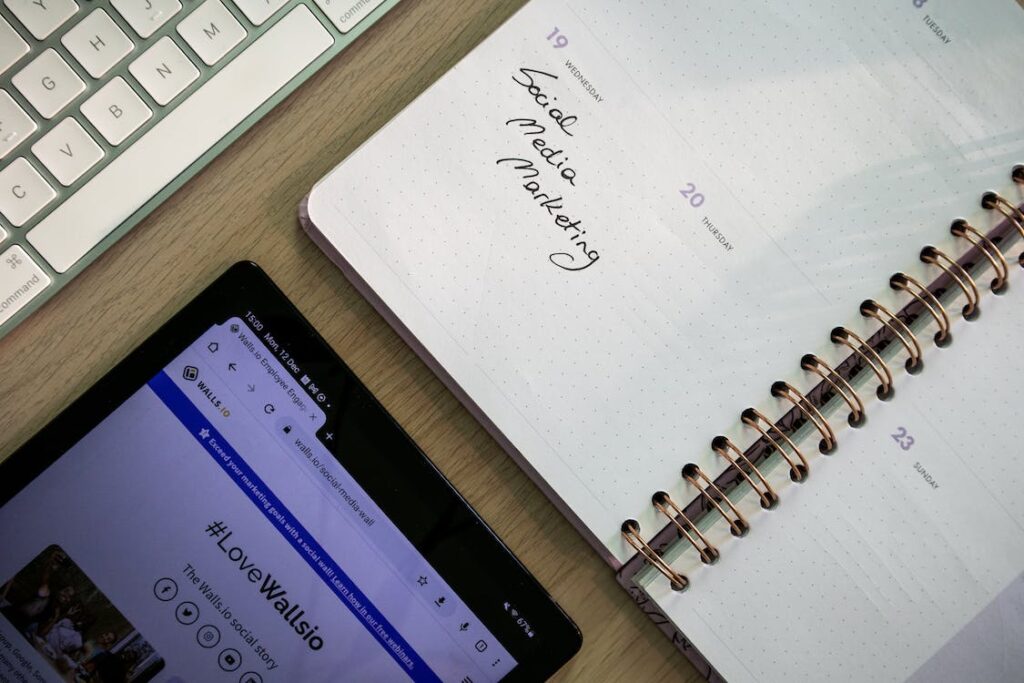The direction with which you approach a work, can make wonders. Total quality manufacturing brought about a fundamental change in manufacturing sectors in the 1980s and then there was the lean methodology that is making waves all over the world.
But there is yet another method that can fundamentally speed up how your business approaches any work and also the amount of time that it takes to reach milestones.
And, that is the design thinking process.
Experts’ Advise on How to Avoid Design Thinking Mistakes
However, the process is easier said than done. And several businesses often fail when trying to incorporate the process to their operations – which is why, I asked the experts, what are the fundamental mistakes that businesses make when using design thinking in their businesses and how can one steer clear of these issues.
And, we got some amazing ideas in the process-
#1. A Lack of Problem Definition
Megha Gadke, the founder of KetoConnect advises that without the correct problem definition, the design thinking process becomes useless. The problem itself has to be identified and fully defined before considering any solution.
#2. Making Assumptions About the User

The users are people who would benefit most from a given design idea. However, designers are not usually in perfect understanding of their users’ needs and motivations. Therefore they have to avoid making assumptions about their users and find out what is most important to them.
#3. Failure to Iterate the Solution
It is always a good idea to build a prototype first. However, if a design thinker fails to iterate the solution, it may lead them into creating an entire product that does not offer any value.
#4. Failure to Recognize the Context
Designers may fail to correctly identify the context of their design idea and thus miss out on essential factors that could influence the solution itself.
For example, it is easy for them to overlook cultural or legal obstacles that would otherwise prevent a perfect solution from being developed.
#5. Failure to Test the Idea with Real Users

Most designers focus on what they think is suitable rather than asking their target audience. This leads to a solution that has been misunderstood and misinterpreted by the user, which eventually leads to a failed design.
Designers have to avoid this mistake by testing their solution with real people from the target group.
#6. Creating Teams that are Too Large or Too Small
Designers should be aware that design thinking aims to get out of their heads and create ideas collaboratively. Innovation develops through co-creation, so it is never good for designers to work in teams too large or too small.

This will prevent their ideas from being heard or recognized by others.
#7. Not Recreating the Design Thinking Process When Faced with New Problems
Design thinking can be used to solve a variety of problems. However, this also means that designers working on slightly different types of issues will have to adapt their design thinking approach accordingly. Still, this may lead to different results and solutions which are not necessarily beneficial for the user.
#8. Working on Projects that Don’t Fit the Design Thinking Process
Design thinking is a process that works best with projects that have new or unconventional solutions.
Therefore, designers may fail to apply it when faced with familiar problems which require conventional solutions. In these cases, they should stick to the design methods usually used in their field.
#9. Not Understanding How to Apply Design Thinking Tools and Methods
Designers have to know how to use the tools and techniques offered by design thinking. Failure to do so makes it very difficult for them to approach their projects from a design-thinking angle ever again, leading to mistakes such as not asking why or focusing on one solution too much.
#10. Not Ensuring that You have the Requisite Kinds of Skills and Abilities

Designers should be aware that successful interactions between team members depend on their acquired understanding of soft skills such as empathy, mindfulness, or trust. Without these, they will fail at creating a collaborative environment that is essential for the success of their project.
#11. Forgetting to Keep Empathy As the Basis of Design Thinking
Dennis Lenard, CEO and co-founder of Creative Navy UX Agency shares his experience – “The process has empathy as its basis, which ensures that we never lose sight of what our clients want. By cultivating our relationship with the client’s world, we reach a nuanced understanding of how to best tailor our services to them.
Design thinking has the major benefit of revealing specific, focused input, which informs crucial business decisions.
The methodology works best in environments that are adaptable and attuned to teamwork. Common mistakes I’ve come across are excluding the customer voice from the process in order to use false assumptions instead and falling into the trap of groupthink.”
Daivat Dholakia, Director of Operations from Force by Mojio shows how he does it –
“Unlike traditional business thinking, design thinking involves more work to empathize with customers and a creative approach to problem-solving. I usually start by thinking about the customer first: how my product will serve them, what they need, and what would make our product the best fit for them.
After that, I apply my findings when laying out our business strategy over the next few months. I may run simulations of how different strategies would play out, then adjust my original plan based on the results.
I have found one of the hardest parts of this process to be involving other people.
Everyone has their own idea of how your product should or can serve its customers, so excellent communication is required to keep everyone on the same page.”
#12. Assuming that You Know How External Constituents Feel and Think

Eric Moraczewski, the CEO of NMBL Strategies takes a very distinct approach seeking a lot of external feedback to pair with their internal feedback, thus allowing them to ensure that the vision is a reality and if it’s not, then how to align internal and external visions.
Their efforts involve one on one interviews, group discussions, innovative in-person events, and surveys – each of these methods provides a different opportunity to ensure that external groups provide feedback and each providing different ways to pull that information out.
Stefanie Schram, who formerly worked at the University of Toronto’s business design studio and teaches how to use design thinking to develop business strategy to executives, shares that businesses employing design thinking often face difficulty embracing different methods to understand customers if they are used to traditional market research approaches.
Typically design thinking takes a smaller set of customers to interview and this often makes teams uncomfortable to identify insights for their strategy on a small number of people. This leads to reverting back to traditional market research with demographic information that doesn’t provide the rich insight to develop a winning strategy.
Stefanie also advises – “Teams are used to detailed financial analyses, large trend reports and pages of data to ‘prove’ their strategy or plan. The challenge with these analytical tools is that the data is from the past and doesn’t necessarily inform that the same will occur in the future.
Prototyping and testing is sometimes hard for teams to embrace because they want to test ‘everything’ and they’re used to providing certain data for the leaders to ‘approve’ their plan.
The challenge with any new strategy or plan is that it can’t be proven to work in advance so prototyping parts of the strategy and plan is the next best approach.”
#13. Being Uncomfortable Identifying Needs, Wants or Desires that Might Involve Emotional or Social Needs
Teams still have a hard time embracing both the cognitive and emotional sides of customers and consumers. Overlooking these types of needs may also leave the organization or brand open to competition who does meet these needs in a different and better way.
#14. Getting Sidelined from Your Major Priorities When Planning
Ann Martin, Director of Operations of CreditDonkey, advises that design thinking should supplement planning instead of making the process slower.
Here’s what she does in order to avoid that –
“I usually start out with a design thinking session by making a vision map. This is something I picked up from prior experience in UX.
I outline what I am trying to accomplish and the steps necessary to get there. I make sure to have the map completed before I start brainstorming.
It serves as a guide to keep me on track and focused.”
#15. Not having Enough and Proper Factual Data

Design thinking is based on customer inputs and reiterating again and again. It’s a continuing process and for that you need a lot of data and ensure that the data is correct and also sufficient for your needs at every step of the way.
Correctly assessing the data is also an imperative. Sometimes the interpretation of data may be erroneous, thus causing teams to go off on separate trajectories that may not be correct or proper for the needs of the business.
Here’s what Sally Stevens, co-founder of FastPeopleSearch.io advises –
“Before executing our business plan, we gather factual data to achieve our practical business goals.
For this purpose, we think strategically and see the bigger picture of the business planning techniques such as problem-solving, proactive behaviour, good communication and interaction among employees.
Some of the mistakes and problems faced by persons who execute the business plan are the lack of factual data, mismanagement, poor assessment and lack of persistence.”
#16. Taking the First Idea
This is completely against the principles of design thinking. Design thinking is supposed to be a way to create several ideas and then test them to select the best one and thereupon reiterate the process in terms of the development of a product or service.
Cannon Hamaker, a business creativity consultant, and a visual artist and founder of Mad Creative Genius advises – “It’s not that the first idea is the worst one, it’s that it’s the automatic one. It’s the idea that is easy to come up with because it’s preloaded in your thought process. It’s not the worst idea, but it’s far from being truly creative, and it’s never the best idea.”
#17. Not Being Divergent Enough
“The research is clear, the businesses that come up with the largest number of solutions, win.
That means that you need to focus heavily on divergent thinking in the early stages of creating your business plan. More possible solutions increase your likelihood of finding the best solution.
To be more divergent, make sure to bring in people from different backgrounds, with different points of view, and take time to just generate ideas.”
#18. Shutting Down ‘Stupid’ Ideas

“The divergent stage requires letting go of judgement. Too often we shut down ideas that seem ridiculous. To combat this, use an ‘and’ approach when talking about ideas that seem ridiculous at first glance.
If someone comes up with an idea like ‘a fly strip for your car’, you say ‘AND we create it with a guard so you don’t catch your hair in it’. Use ‘and’ to make the idea better.”
#19. Having a Wrong Frame of Mind
“Research shows that people who think of problem solving in terms of solving a puzzle are far less creative than people who think in terms of creating a patchwork quilt. With a patchwork quilt, you already have everything you need, and whatever you create will be a work of art.”
#20. Rewarding the wrong thing
“You need to create a culture of creativity by rewarding creativity. You do that by rewarding people for taking action, and ignoring the outcome. Don’t focus on success or failure for rewards. Reward people taking action toward a goal.”
#21. Using Design Thinking for Short-term Plans
Olga Voronkova, Marketing Director at KeyUA shares her thoughts in this regard – “
Most of the time, Design Thinking is only used to develop a product or execute a project. However, we should include design thinking into the organization’s long-term plan. We will need to consider the consumer’s entire ecosystem and use Design Thinking principles at every stage.”
Further using design thinking for short-term plans can cause you to use it repeatedly, for small projects, which is not really what it is meant for, and can lead to the next problem –
#22. Applying Design Thinking at Every Touchpoint can cause Challenges of Scale and Pace

According to Olga Voronkova – “The number of touchpoints we communicate with customers has increased due to digitization. In a world where time to reply has shrunk to near zero, we must now communicate with our customers across various channels.
Applying Design Thinking at every touchpoint while both innovating and engaging at a rapid pace can be difficult. We should prioritize our channels before using Design Thinking ideas in stages.”
#23. Not Building a Design Culture
Design Thinking is often limited to product teams. Either a team of designers rotates between groups, or a designer is assigned to each product team.
While you must determine your approach based on their culture, you must implement a Design Thinking strategy across all your teams irrespective of their functional roles to get the full benefits of Design Thinking.
#24. Not Allowing for Failures

Jennifer Harder, Founder & CEO of Jennifer Harder Mortgage Brokers shares how she avoids this design thinking mistake –
“We told the team that we understand that failure will happen and that we’re prepared for it. Our tests don’t always work out, and progress on some issues can be slow.
We don’t want to have the team believe that failure is permanent; therefore, we’re going to keep pushing on the project, making sure we do it correctly the first time, but we want the team to understand that doing something again and again until it’s perfect isn’t a sign of failure.
We’re pushing the team to engage in a self-reflective exercise on the situation so that we can all be better off from experience. Even successful businesses sometimes have failed at something and then succeeded.”
#25. Not Experimenting with New Concepts
According to Alan Harder Mortgage Broker, AlanHarder.ca “A method that emphasizes collaboration is included in design thinking.”
It’s critical for any business to accept and test every idea that comes to mind throughout this process.
Alan shares – “Visual storytelling, for example, has aided the team in sketching out concepts and allowing us to see more of what they’re attempting to do.These concepts may then be applied to the methods I’ve put in place to handle a specific issue.”
#26. Not Checking for Business Viability
You should never discount ideas – even stupid ones, while they are being created. That’s the first step in the ideate process.
After that, comes rigorous assessment of the ideas.
And, one of the way to assess your ideas, is via checking them for business viability.

According to Lauri Kinkar, CEO of Messente, one of the challenges of using design thinking in a business plan is business viability. While design thinking aims to meet customer’s needs, sometimes it is not sustainable and does not align with the company’s business goals.
While creating solutions to meet the customer’s needs, one should ensure that it is viable. Business viability is like asking, “How much time and money would the idea cost your company? Is it worth doing?”
Consider the revenue options for your own business in order to further assess the viability of the solution.
Pretty complicated right? Don’t worry!
If you have any questions, drop in a comment, or if you want a one-on-one consultation, shoot us an email. I recommend that you also check out our list of services so as to check if we can help you out in any other way as well!
That’s all. Hope you found the article useful. If you did, do give it a share.
Read Next:
- How Augmented Reality Can Transform Your Startup
- All About Guest Posting: My Favourite SEO Strategy
- How to Do Market Research: The Definitive Guide
- The 7 Functions of Marketing You Must Know About





















